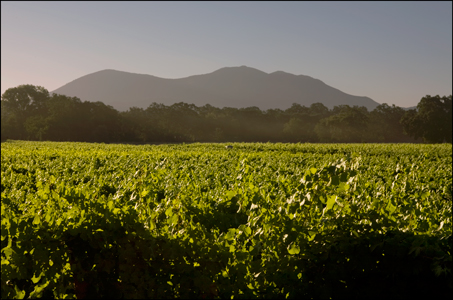Viticulture Consulting
 Coordination between vineyard and winery is fundamental to excellent wine quality. A positive relationship between winemaker, vineyard managers and growers is essential to assure that integration. Experience here is important, as is the ability to listen, learn and re-synthesize that input toward providing new solutions.
Coordination between vineyard and winery is fundamental to excellent wine quality. A positive relationship between winemaker, vineyard managers and growers is essential to assure that integration. Experience here is important, as is the ability to listen, learn and re-synthesize that input toward providing new solutions.
Viticulture Consulting Overview
- Work with geologists to assess optimal bare land planting potential based upon soils report, water availability, and topography.
- Work with winery principals and staff to ascertain the highest quality potential for variety, rootstock, clone, and spacing consistent with wineries varietal and stylistic mix desires.
- Work with Vineyard Development Company to assure that vineyard layout row orientation, spacing and future trellising are consistent with expectations for ultra-premium fruit.
- Communicate with Vineyard Management Company and/or Growers to assure that the winery’s interests are completely understood. This is typically done in the vineyards with respective ranch managers during multiple pre-harvest visits within the growing season.
- Assess crop development as well as crop load to assure balanced vines for optimal quality.
- Help assess irrigation requirements during the growing season, especially in later stages where flavor development from prolonged grape hang time may be enhanced without excessive berry shriveling or crop weight loss.
- Determine potential “gems” within vineyard site i.e. hill tops, south facing slopes, clonal changes, soil changes etc, that will justify treating as a separate sub-block to be monitored, harvested, and vinified separately.
- Make harvest calls based upon daily morning visits to each block in order to capture the highest concentration of flavor intensity, constantly communicating to Vineyard Company and Winery anticipated harvest dates based upon grape maturity trends and impending weather influences.
- Monitor harvest conditions, picking quality, and absence of MOG to assure that the highest quality fruit reaches the winery.
- Follow-up, usually in February after harvest, conducting “one on one” vineyard grower tastings to review the harvest, tasting each growers separately vinified wines with the goal of constant improvement.